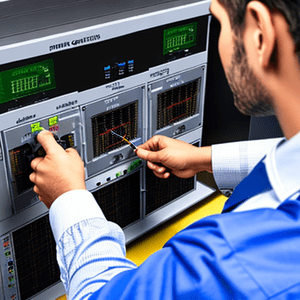How to Conduct a Power Quality Analysis in China?
Power quality is the capacity of equipment to utilize the energy given to it. Power quality difficulties result in excessive energy consumption and bills, high maintenance costs, direct economic consequences, productivity loss, unrecoverable downtime and resources, unstable equipment, and equipment failure. Any organization is required to evaluate energy management, and any energy management program must incorporate an evaluation of power quality. CareLabs offers a variety of services to solve several energy-related concerns. Based on our knowledge in this field, we provide research and analysis services of the highest quality.
Difficulties with Electricity's Quality:
The quality of power supply is a more sophisticated and delicate measure than dependability. Electrical supply appropriateness and compatibility are more significant than supply availability.
Power quality variations can be split into two categories:
Interruptions:
When there is an abnormality in the voltage or current, disturbances arise. When the peak magnitude exceeds a certain threshold, transient voltages can be recognized. RMS voltage fluctuations, including dips, surges, and interruptions, can be noticed when the RMS variation exceeds a predetermined threshold.
Variations in steady-state conditions:
RMS voltage fluctuations and distortion of harmonic waves are examples of steady-state alterations. To sample these fluctuations, voltage and current measurements across time are necessary. This sampled data is shown most effectively as a voltage distortion amount throughout time by employing the average distortion level, which is 95% unlikely to be surpassed, and other analytical approaches.
Table of Contents

These are some of the factors affecting supplier quality:
- Voltage constancy
- Distribution frequency
- Power lowers
- Spikes in voltage momentary voltages
- Harmonic adjustments
- Appraisal of radiofrequency
The bulk of these components are challenging to detect and observe. The examination frequently requires specialized testing equipment, and it must be performed by qualified technicians or engineers.
Constant voltage:
In response to load fluctuations and other system events, the steady-state voltage levels of the electrical system fluctuate often. Voltage levels often decrease as the load increases. In the absence of a load, voltage levels also increase.
Voltage unbalance:
It refers to a change in the phase angle displacement or the value of the three-phase supply. Unbalanced loads and impedances can also contribute to this issue. It causes equipment failure, heat impacts, and loss of efficiency.



Voltage variations:
Voltage sags are brief drops in RMS supply voltage lasting up to one minute. Between 0.5 cycles and 1 minute, voltage swells are brief rises in the RMS supply voltage.
Supply frequency:
The frequency at which the supply voltage wave alternates is called the supply frequency. The National Electricity Market’s frequency norms are established by the National Electricity Market Management Company, or NEMMCO (National Electricity Market Management Company). Outside of the National Electricity Market, the local producing authority determines frequency norms.
Deformation of harmonics:
Periodic and continuous is this distortion of the source voltage or current waveform. Excessive harmonics can result in additional losses, flickering lights, malfunctions, radio interference, motor vibrations, and poor operation of sensitive equipment.







Procedure for Power Quality Analysis at CareLabs:
- The objectives of both the on-site evaluation and the power quality study are specified.
- As your investigation continues, construct a one-line schematic of the whole electrical system.
- At several places along the distribution end, a power analyzer is installed to capture data from each individual system.
- Continue illustrating the distribution system in the line diagram.
- In addition to reviewing and analysing the acquired data, additional analysis is performed.
- Submitting a report and suggested remedies
Our team of highly qualified personnel can help with power quality concerns. Your power quality is at its highest level after a comprehensive study and analysis of the system. Contact us for more information about our power quality analysis service.
RELATED NEWS








Coordination


RELATED NEWS











